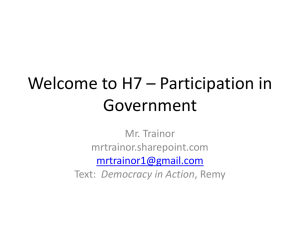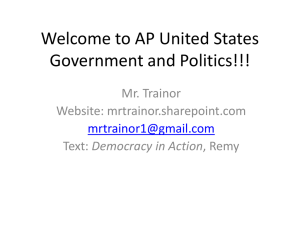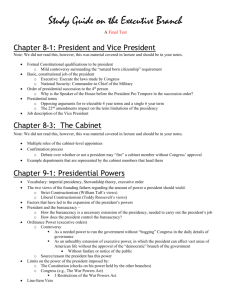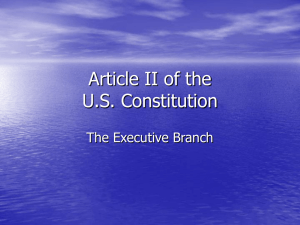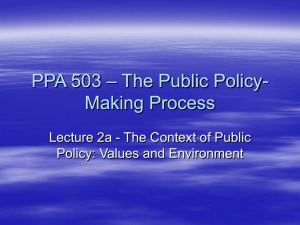Midterm Review SHEET - Garden City Public Schools
advertisement
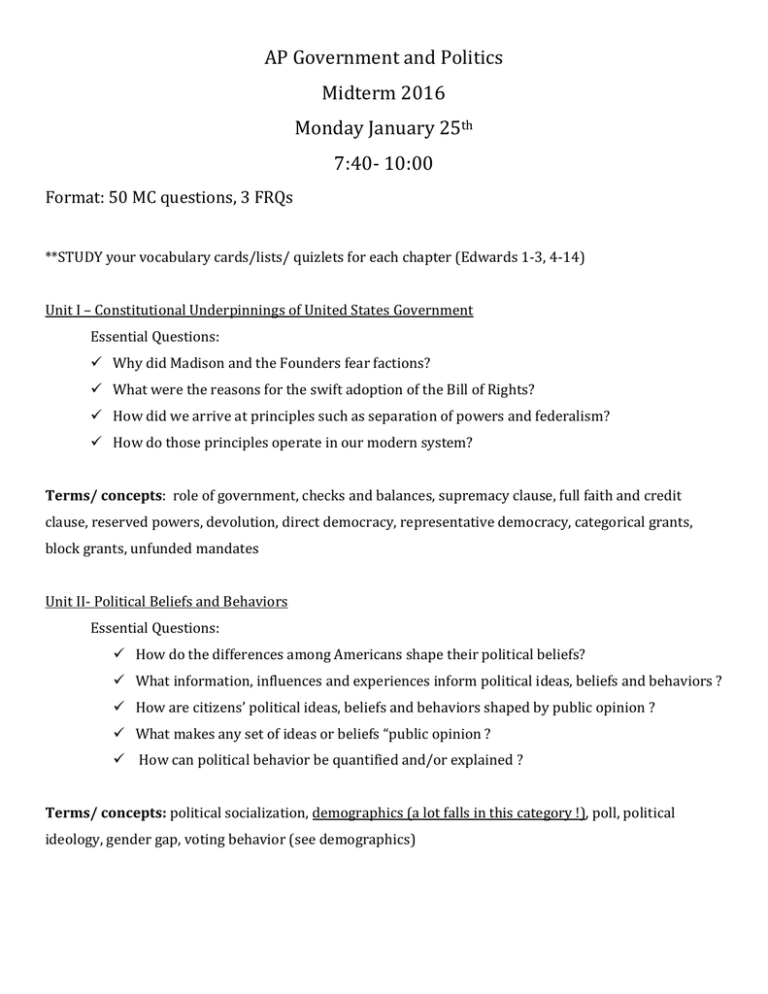
AP Government and Politics Midterm 2016 Monday January 25th 7:40- 10:00 Format: 50 MC questions, 3 FRQs **STUDY your vocabulary cards/lists/ quizlets for each chapter (Edwards 1-3, 4-14) Unit I – Constitutional Underpinnings of United States Government Essential Questions: Why did Madison and the Founders fear factions? What were the reasons for the swift adoption of the Bill of Rights? How did we arrive at principles such as separation of powers and federalism? How do those principles operate in our modern system? Terms/ concepts: role of government, checks and balances, supremacy clause, full faith and credit clause, reserved powers, devolution, direct democracy, representative democracy, categorical grants, block grants, unfunded mandates Unit II- Political Beliefs and Behaviors Essential Questions: How do the differences among Americans shape their political beliefs? What information, influences and experiences inform political ideas, beliefs and behaviors ? How are citizens’ political ideas, beliefs and behaviors shaped by public opinion ? What makes any set of ideas or beliefs “public opinion ? How can political behavior be quantified and/or explained ? Terms/ concepts: political socialization, demographics (a lot falls in this category !), poll, political ideology, gender gap, voting behavior (see demographics) Unit 3 - Political Parties, Interest Groups, Elections, and Mass Media Essential Questions: Do political parties adequately represent public opinion in the U.S? Why has there been a proliferation of interest groups in the U.S? Has the media become too influential in US politics? How do linkage institutions impact government? Why is the issue of campaign finance a seemingly unsolvable problem ? How does the “50 State election” system encourage participation ? Limit participation? Terms/ concepts: media, narrowcasting, role of the political party, role of the PAC, linkage institutions, policy agenda, iron triangle*, lobbyists, grass roots lobbying ticket-splitting, national party organization, “50 Party System” (as in 50 states), critical election, coalition, party realignment, party dealignment, third parties, voter turnout, Motor Voter, campaign finance, soft money, Federal election Commission, McCain-Feingold, Citizens United v. US, 527s, 501 (c), Super PACs Unit 4- The Congress, the President and the Bureaucracy Essential Questions Why did the framers give the longest list of enumerated powers to Congress? Why did the Framer not give more explicit power to the president? Does the current system of checks and balances make Congress unacceptably cumbersome? How does a member of Congress determine what constituents want? What are the responsibilities of the president under the US Constitution? Evaluate the role of the modern presidency . Evaluate how public relations and the media affect the presidency. What is government regulation and why is it utilized by the government? How are bureaucracies organized? Does too much bureaucracy encroach on the democratic rights of citizens? Terms and concepts: powers of the House of Representatives, powers of the Senate, powers of the President, gerrymandering, White House Staff, congressional committees, iron triangles *, primaries, incumbency, Electoral College, pork-barrel, fiscal policy, War Powers Resolution (1973), federal expenditures, entitlements, national debt, OMB (Office of Management and Budget), authorization bill, appropriations bill (1 year *), civil servants, privatization, deregulation


